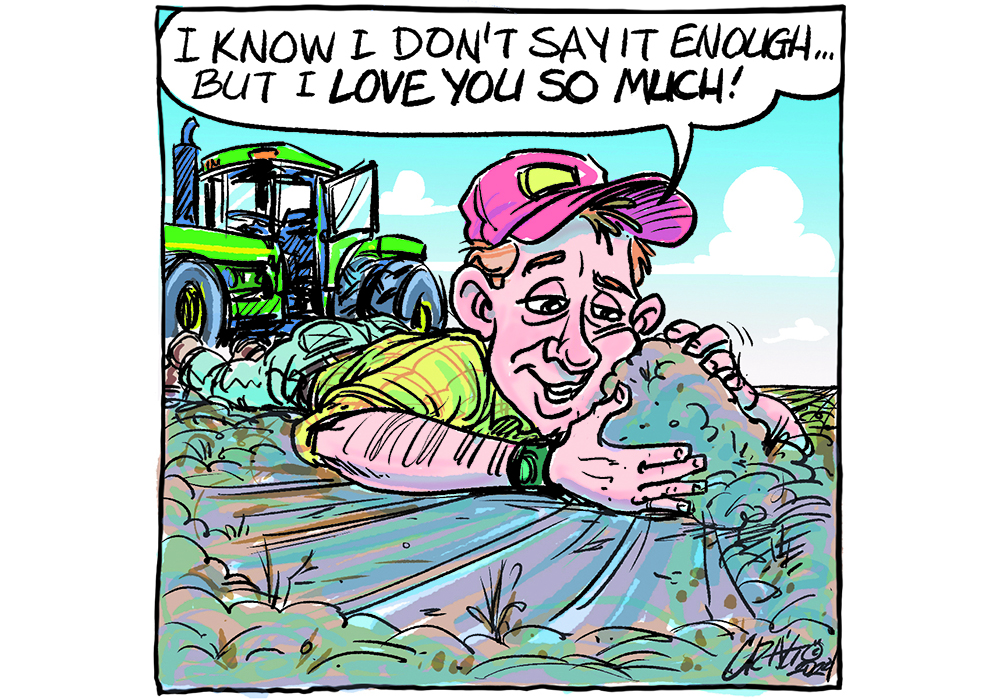Quick, what one thing is essential to any farming operation?
If you had to think for a minute to come up with soil, it’s understandable. Land, or more specifically soil, is much like water for a fish or air for land animals. We are oblivious to its presence until it is gone or degraded.
This lack of attention may partly explain why a new report from a Canadian Senate committee represents the first comprehensive look at the issue at a federal level in 40 years.
Read Also

Farmer ownership cannot be seen as a guarantee for success
It’s a powerful movement when people band together to form co-ops and credit unions, but member ownership is no guarantee of success.
In Critical Ground: Why Soil is Essential to Canada’s Economic, Environmental, Human and Social Health, the authors point out what soil does for us, from filtering and storing water to mitigating flooding, cycling nutrients, sequestering carbon, providing food, fibre and fuel.
Chaired by Ontario Senator Rob Black, the committee says soil should be considered a strategic national asset and should have a national advocate to champion issues with policy makers.
We didn’t always take soil for granted. The mid-1930s Dust Bowl saw the creation of the Prairie Farm Rehabilitation Administration. Community pastures were created to keep vegetation on vulnerable lands and prevent plowing of marginal lands.
Among its programs, it provided free saplings from its nursery at Indian Head so farmers could plant shelterbelts to slow the dry prairie winds and keep soil in place.
Ironically, progress in farming may have masked continued stress on soil. Crop breeders and chemists delivered better genetics and crop protection and farmers adopted technologies such as minimum and zero-till to improve crop performance, enhance soil health and sequester carbon.
These factors arguably contributed to the PFRA being seen as less relevant, and it was shut down in 2013.
But improved farming practices have merely slowed soil degradation, the report claims. These practices themselves have lost ground somewhat, as farmers till to control herbicide-resistant weeds.
With this in mind, the report proposes that PFRA be resurrected, with a mandate to help farmers maintain soil under their stewardship. The National Farmers Union backs this idea, proposing that the resurrected agency be named the Canadian Farm Resilience Agency, to “work with farmers to help them adapt to climate change, build resilience and take steps to reduce emissions while maintaining yields and net incomes.”
Other measures from the Senate report also aim to foster viable, profitable farms. These include tax credits for producers who adopt soil-saving technologies and adjusting crop insurance programs to encourage and reward good soil management. Another idea is to create a carbon market that farmers can easily access and use.
Providing incentives to promote farming practices that protect soil will likely get a better reception by farmers compared to mandating specific crop-production strategies.
While the Senate report has no legislative weight, groups such as Alberta-based Ag for Life are encouraging the federal government to embrace it, saying it provides “practical and viable guidance for next steps.”
The office of federal agriculture minister Lawrence MacAulay issued a statement thanking the Senate committee for its work, with a commitment to “review the report and recommendations closely.” We applaud this stance and hope it leads to assertive and timely policies. As Black said, time is short, and “we do not, and I repeat, we do not have another 40 years to protect and conserve our soil. We must act now.”
Karen Briere, Bruce Dyck, Barb Glen, Michael Robin, Robin Booker and Laura Rance collaborate in the writing of Western Producer editorials.















